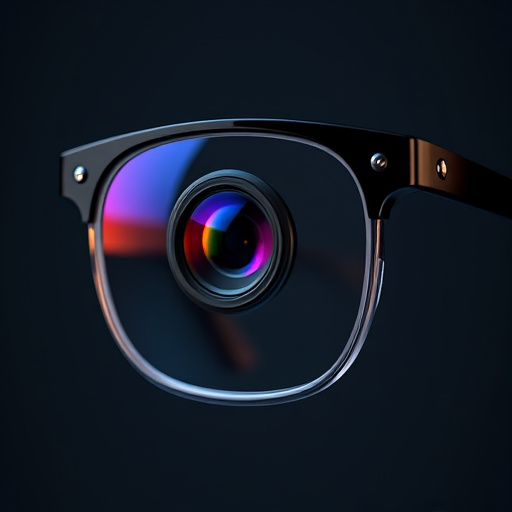Glasses with integrated cameras, also known as hidden camera glasses, are a rapidly growing tech trend offering both personal and professional uses. These discreet devices blend eyewear design with high-definition video capture, appealing to consumers seeking versatile, functional technology. With improved resolution, battery life, and motion activation, they cater to diverse needs from vlogging to security surveillance. However, users must be aware of legal and privacy considerations regarding their use, ensuring transparency and consent. These glasses expand capabilities for capturing unfiltered media while navigating legal boundaries.
Hidden camera glasses, or smart glasses equipped with concealed filming capabilities, have emerged as intriguing gadgets. This article delves into the world of these innovative devices, offering a comprehensive overview of their functionality, design, and diverse applications. From understanding the technology behind them to exploring legal privacy concerns, we uncover the growing trend of glasses with a camera built-in and their impact on modern lifestyles and professions.
Understanding Glasses with a Camera Built-In: A Comprehensive Overview
Glasses with a camera built-in, commonly known as hidden camera glasses, represent a fusion of technology and discretion. These innovative devices seamlessly integrate a high-definition camera into a stylish pair of sunglasses or prescription glasses, offering users the ability to capture unseen moments with ease. More than just a gadget, they serve diverse purposes, from professional surveillance to personal documentation, appealing to a wide range of consumers seeking both functionality and privacy.
The integration of a camera within glasses is not merely an aesthetic choice; it offers significant advantages. The discreet placement ensures the wearer can capture footage or take photos without drawing attention, making them ideal for covert operations or capturing candid moments. With advancements in technology, these cameras now boast improved resolution, better battery life, and even motion-activation features, enhancing their versatility and usability. Understanding the capabilities and limitations of glasses with a camera built-in is crucial for anyone considering this unique technology.
The Rise of Hidden Camera Glasses: Market Trends and Demand
The market for glasses with a camera built in has witnessed a significant surge in recent years, reflecting a growing demand for discreet and innovative technology. This trend is driven by consumers seeking versatile devices that seamlessly blend functionality with everyday wear, especially in the realms of personal documentation, vlogging, and security. The popularity of these hidden cameras can be attributed to their unique ability to capture high-quality video and photos without drawing attention, making them appealing for both casual users and professionals alike.
This rising demand has prompted numerous tech companies to develop and introduce various models, catering to diverse consumer preferences and budgets. From sleek and stylish designs aimed at fashion-conscious individuals to robust options designed for outdoor adventures and security purposes, the variety in glasses with a camera built in offers something for every user’s needs. As technology advances, these devices are becoming increasingly sophisticated, incorporating improved sensors, better battery life, and enhanced video quality, further fueling their popularity in both domestic and professional settings.
Technical Aspects: How Are These Glasses Designed?
Glasses with a camera built-in, often referred to as hidden camera glasses, are meticulously designed to integrate technology seamlessly into everyday eyewear. These innovative devices typically incorporate a compact camera module into the frame, strategically placed to capture video or still images discreetly. The cameras are usually high-resolution and can record in HD or even 4K, ensuring clear and detailed footage.
The technical design involves sophisticated miniaturization, allowing for components to fit within the thin profile of the glasses. This includes advanced image sensors, memory storage, and processing units. Some models may also include additional features like night vision capabilities, motion-activated recording, or even wireless data transmission, making them versatile tools for various applications.
Legal and Privacy Considerations: What You Need to Know
When considering wearing glasses with a camera built-in, it’s crucial to be aware of legal and privacy implications. In many jurisdictions, using such devices can fall under surveillance laws, which protect individuals from unreasonable observation. Capturing images or videos without consent is often illegal and unethical, potentially leading to severe consequences.
Privacy is a significant concern. Always ensure you have permission before recording anyone or anything. Be transparent about the presence of the camera to avoid misunderstandings. Regularly review local regulations regarding wearable cameras to stay informed about rights and responsibilities, especially when in public spaces or around unknown individuals.
Exploring Use Cases: From Lifestyle to Professional Applications
Glasses with a camera built-in, often referred to as hidden camera glasses, offer a unique blend of technology and discreteness. Their primary use cases span across various domains, from personal lifestyle enhancements to professional applications. In everyday life, these innovative gadgets can be used for documenting travel experiences, capturing memorable moments during outdoor activities, or even as a creative tool for vloggers and content creators.
In the professional realm, hidden camera glasses have found their place in industries such as security, surveillance, and journalism. They enable hands-free, unobtrusive recording, making them ideal for tasks that require stealth and mobility. For instance, journalists can use these glasses to capture unfiltered footage from the frontlines or conduct secret interviews without drawing attention. Similarly, security personnel can discreetly monitor sensitive areas, enhancing their ability to gather evidence and ensure safety.
